The Coneflower (Echinacea) is a perennial wildflower with several varieties. It’s a popular choice for wildflower gardens, along with many of the companion plants for Echinacea below. They are true harbingers of spring.
You can’t help but wonder at the beauty of nature if you’re lucky enough to see a field of Purple Coneflowers (Echinacea purpurea) at the end of winter. You’ll want to lose yourself in these 3-feet tall beauties.
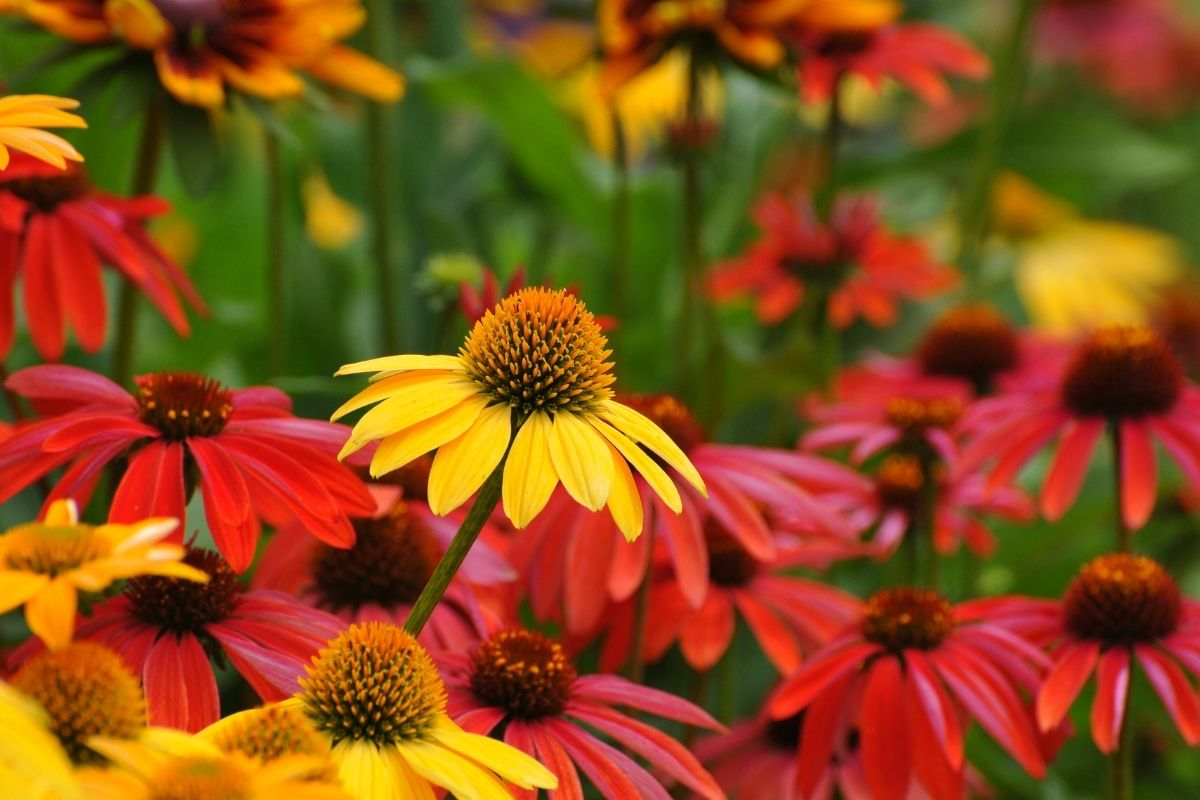
The good news is you can create your own wildflower garden to enjoy every time you look out the window.
Learn more about the best companion plants for Echinacea, and how they help each other thrive in the garden.
What Is Companion Planting?
One of my favorite quotes is “I found out what the secret to life is – friends. Best friends.” — Fried Green Tomatoes
Well, this applies to companion plants too. Did you know that plants and flowers help each other stay healthy?
Companion planting is one of the best ways to design your garden space. You can plant your flowers, vegetables, and plants together in a way that benefits all of them. Companion plants are just like friends. They help each other live, conserve space, prevent insect infestations, and keep the soil healthy.
Carrots love tomatoes by Louise Riotte is a really great book if you want to learn more about this topic.
What Are the Best Companion Plants for Echinacea?
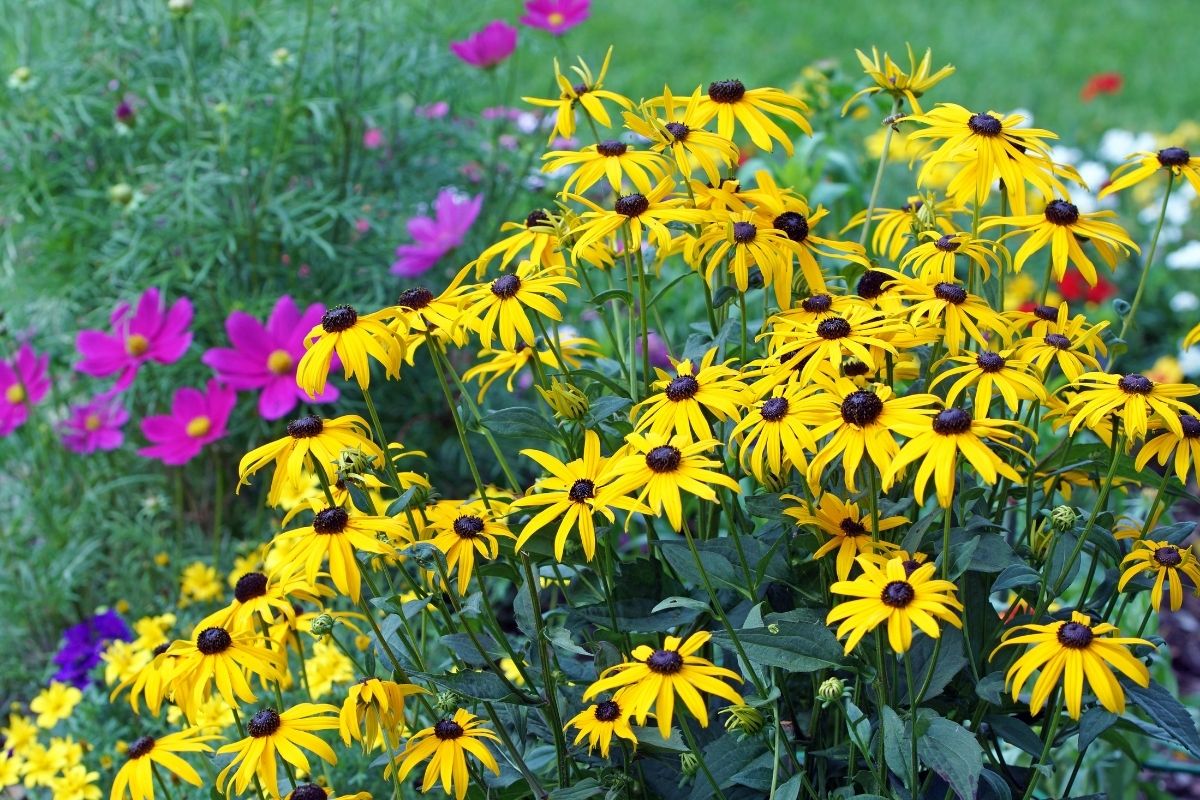
The best time to plant Echinacea is in the fall. It performs best in full sun or partial shade in the United States Department of Agriculture Hardiness zones 3 to 9. Coneflowers prefer moist, well-drained soil. So, when choosing companion plants for Echinacea, select varieties that also prefer the same conditions.
Coneflower is one of the many plants in my wildflower garden. I researched companion planting to find out what other perennials to plant with my Coneflowers to help keep them happy and healthy.
Here are some of my favorite flowering companion plants for Echinacea. They work with nature to boost the life of Cornflowers.
1. Stachys (Hummelo betony)
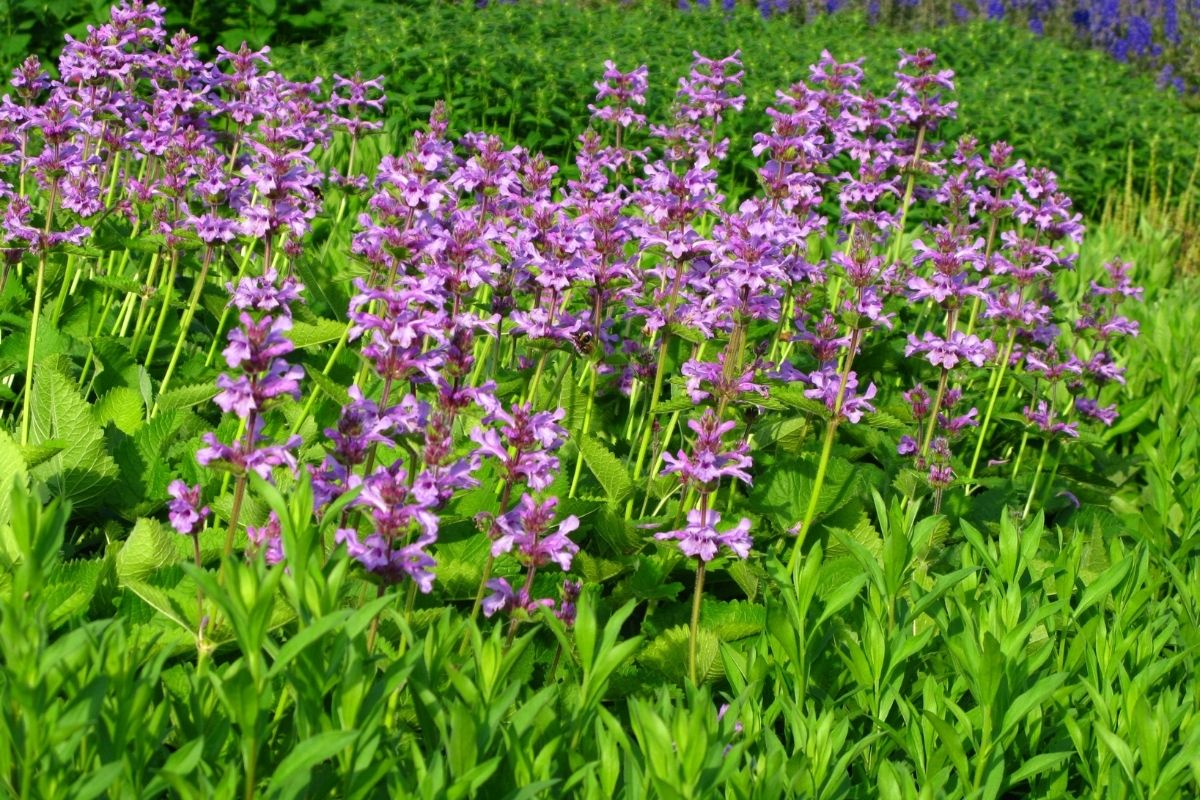
This lovely perennial features dark green leaves and rosy-lavender spikes that grow on stems. They’re easy to grow and prefer full sun and partial shade, just like Echinacea. It’s related to mint and grows up to 2-feet tall.
Hummelo increases pollination for your Coneflowers and other perennials because it attracts hummingbirds, bees, and butterflies.
Its height also offers support for Coneflowers. These plants are deer-resistant, which helps prevent your wildflowers from being decimated by foragers.
2. Catmint (Nepeta mussinii)
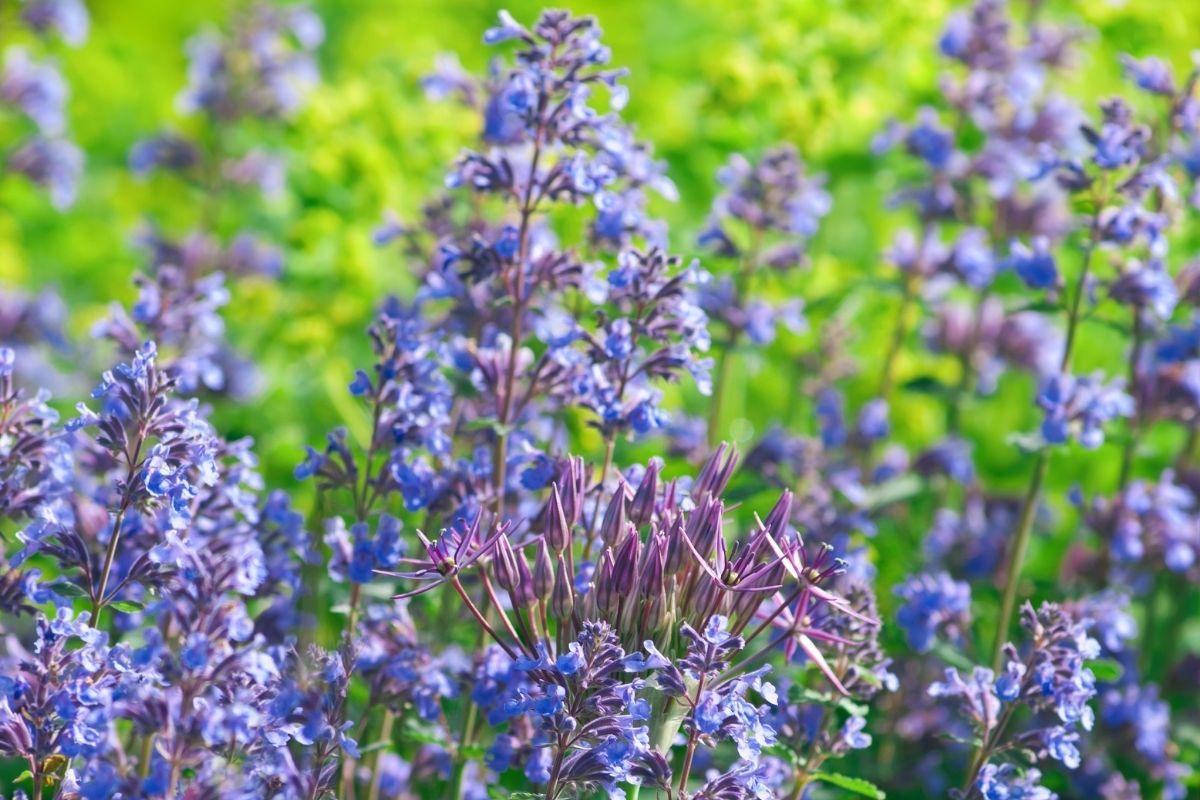
Just like Echinacea, Catmint requires full sun and well-drained soil. This perennial features lush green leaves and blue lavender flowers. It’s also easy to grow and drought tolerant. The biggest benefit as a companion plant for Echinacea is its natural bug repellent, especially aphids and squash bugs.
Catmint is a great choice for natural wildflower gardens and rock gardens. Plus, the mint leaves are tasty in salads, or as garnishings.
3. Stonecrop (Hylotelephium)
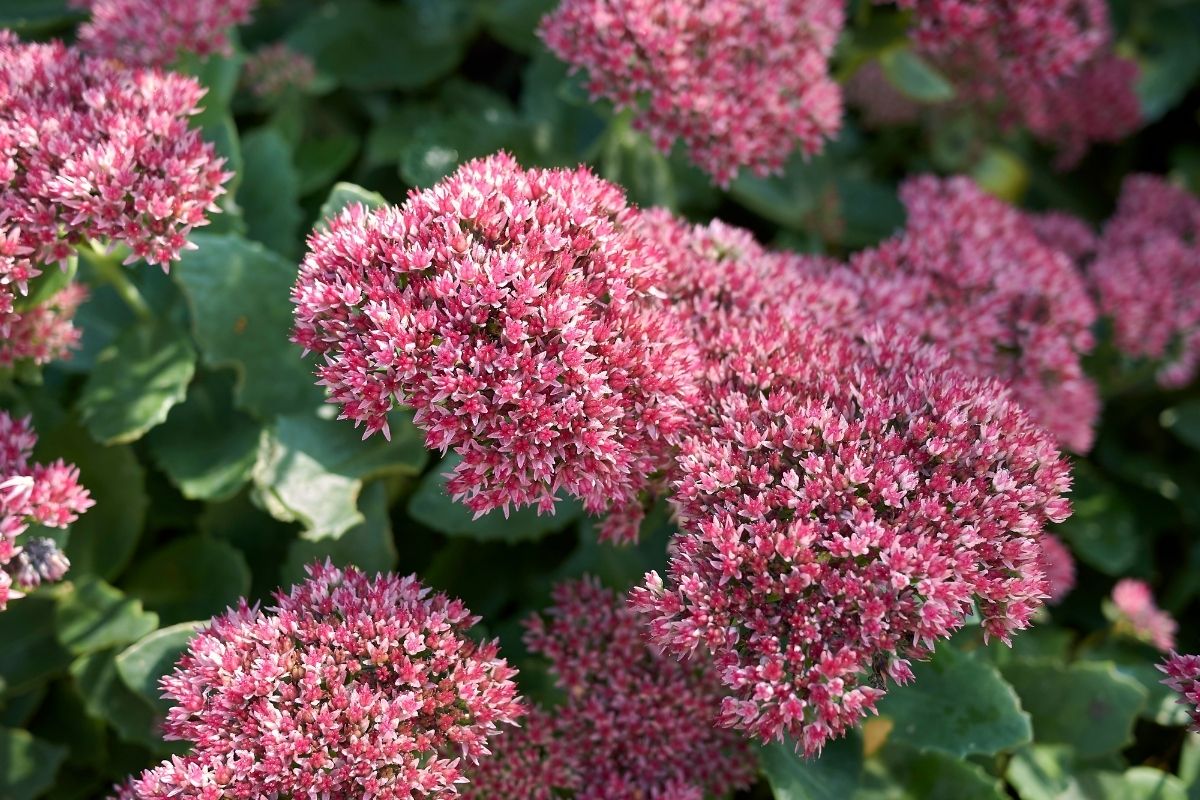
Another perennial, Stonecrop, tolerates drought and heat. Butterflies and songbirds love Stonecrop, which makes this plant a superb pollinator and companion plant for Echinacea.
They’re also perfect for butterfly gardens and children’s gardens. You have the choice of several colorful hybrids that range from stunning shades of rose, pink, and white.
4. Black-Eyed Susan (Rudbeckia fulgida)
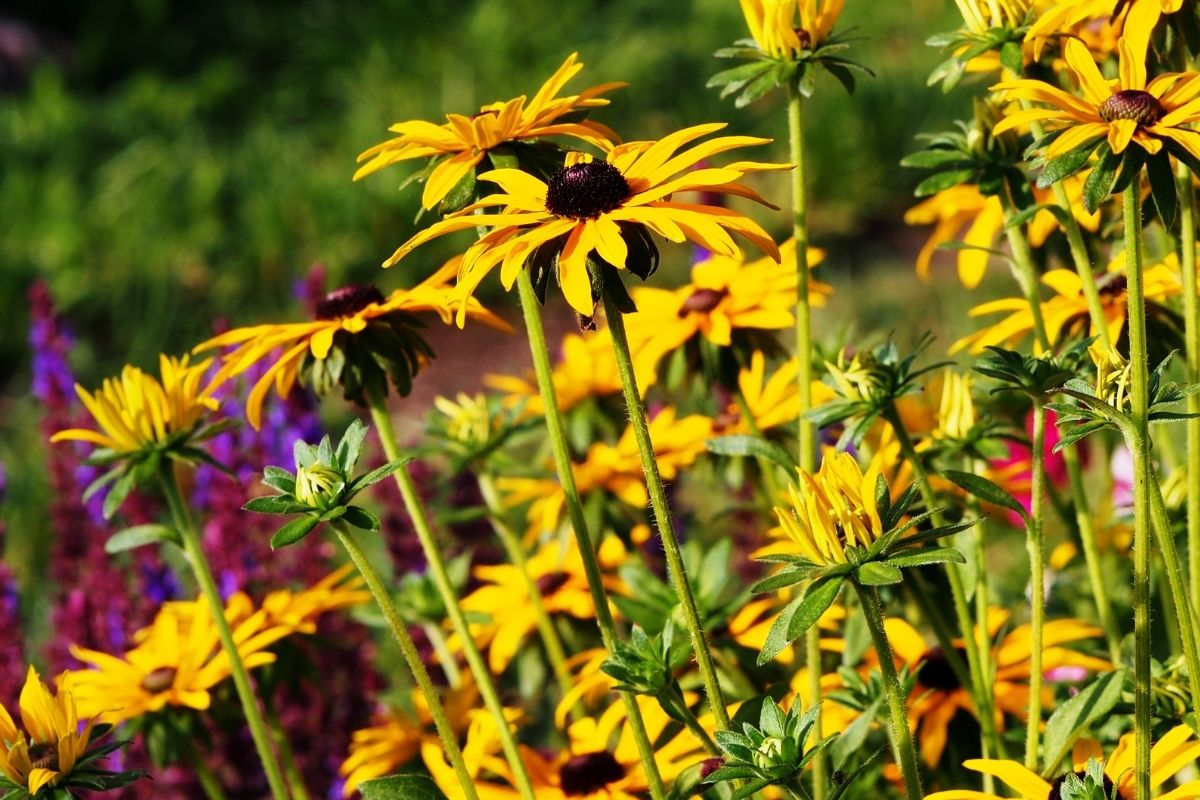
Black-eyed Susan is a perennial plant that grows up to 3 feet tall. Its sturdy stalks and leaves offer support to Echinacea, and they also attract butterflies and other pollinators. Black-eyed Susans produce yellow to orange daisy-like florets with a brownish cone center.
The cheery blooms offer an attractive contrast to the purple flowers of Echinacea. Another benefit these plants provide for Echinacea is deer resistance.
5. Coral Bells (Heuchera americana)
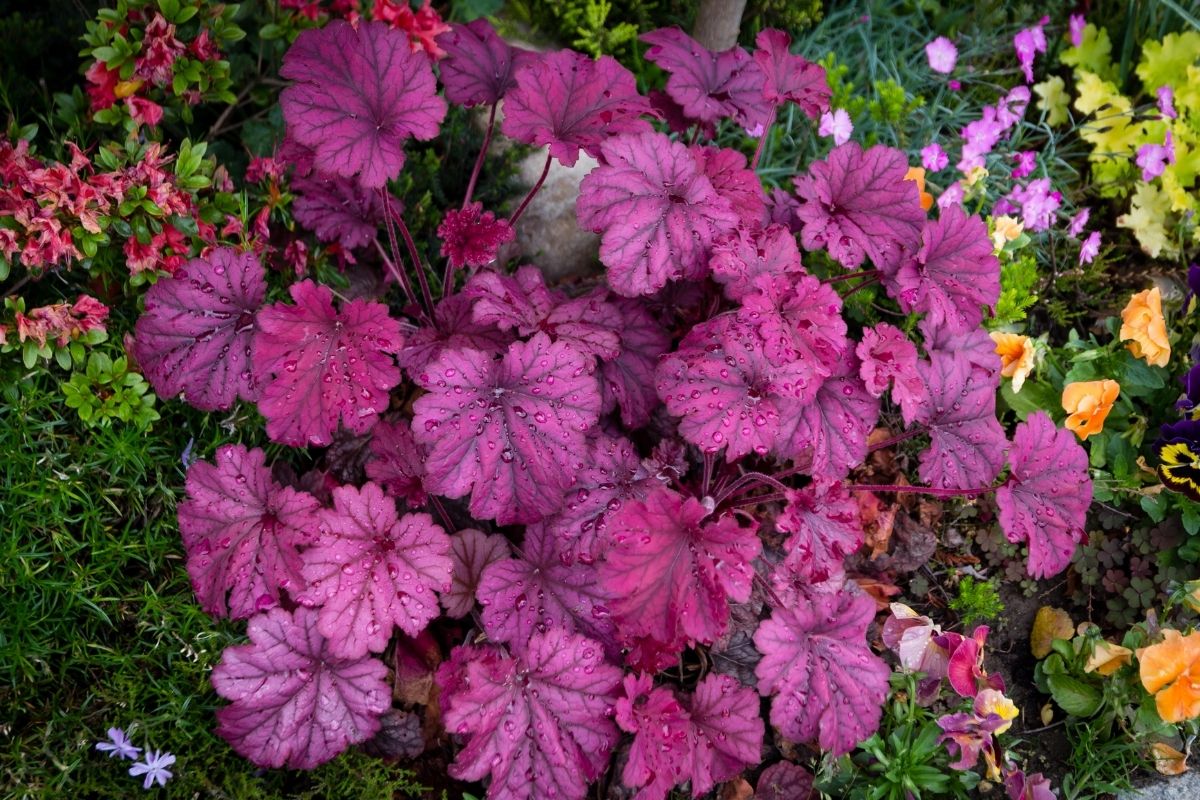
You might know Coral Bells by other names, such as Rock Geranium, Alumroot, Coral Bells, or American Sanicle.
Beyond Coral Bells’ attractive foliage and an array of colors of cream, tan, green, orange, and lavender, they also deter deer and rabbits. As companion plants for Echinacea, they offer protection from foragers, attract pollinators, and display colorful flowers.
6. Salvia (Salvia farinacea)
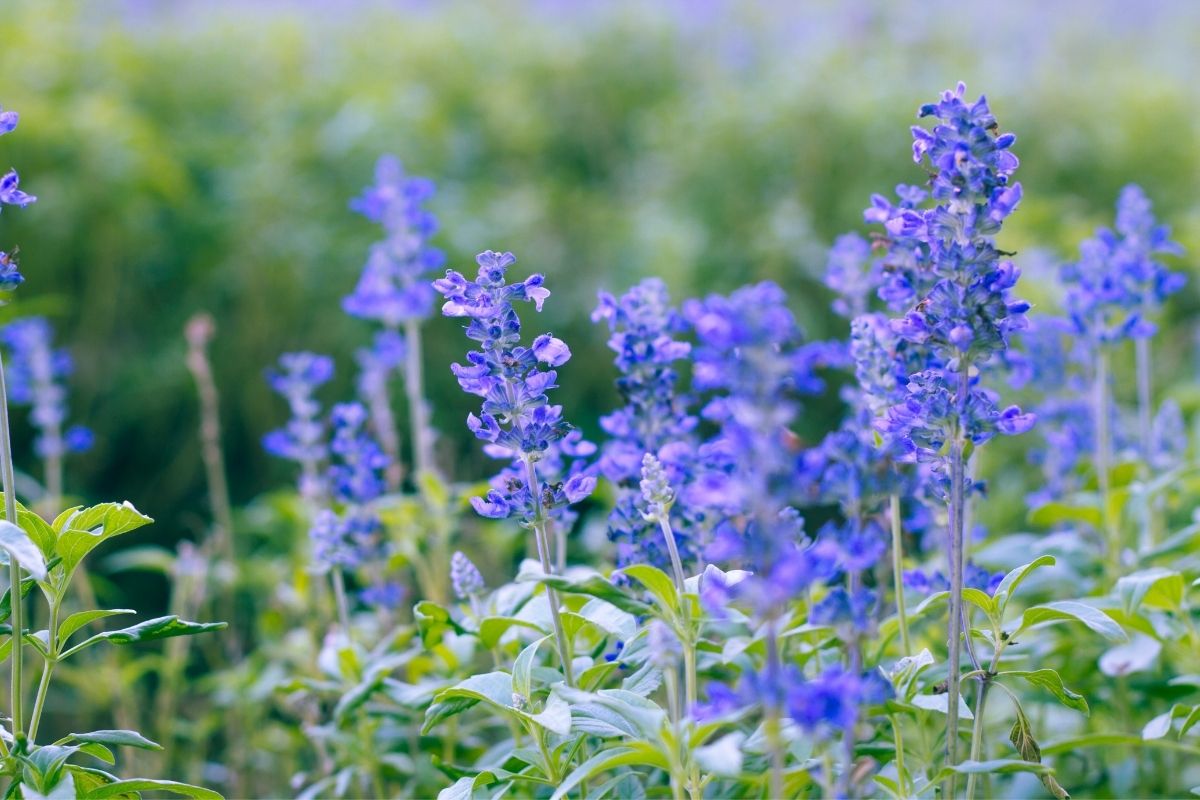
Salvia farinacea, also known as Blue Sage and Mealy Cup Sage, are captivating members of the mint family. These deep blue perennials contribute a striking border as companion plants for Echinacea.
Salvias are deer and drought resistant, hardy, and require the same growing conditions as Coneflowers. Another benefit of Salvia is its dense, violet flowers that attract butterflies.
7. Bee Balm (Monarda bradburiana)
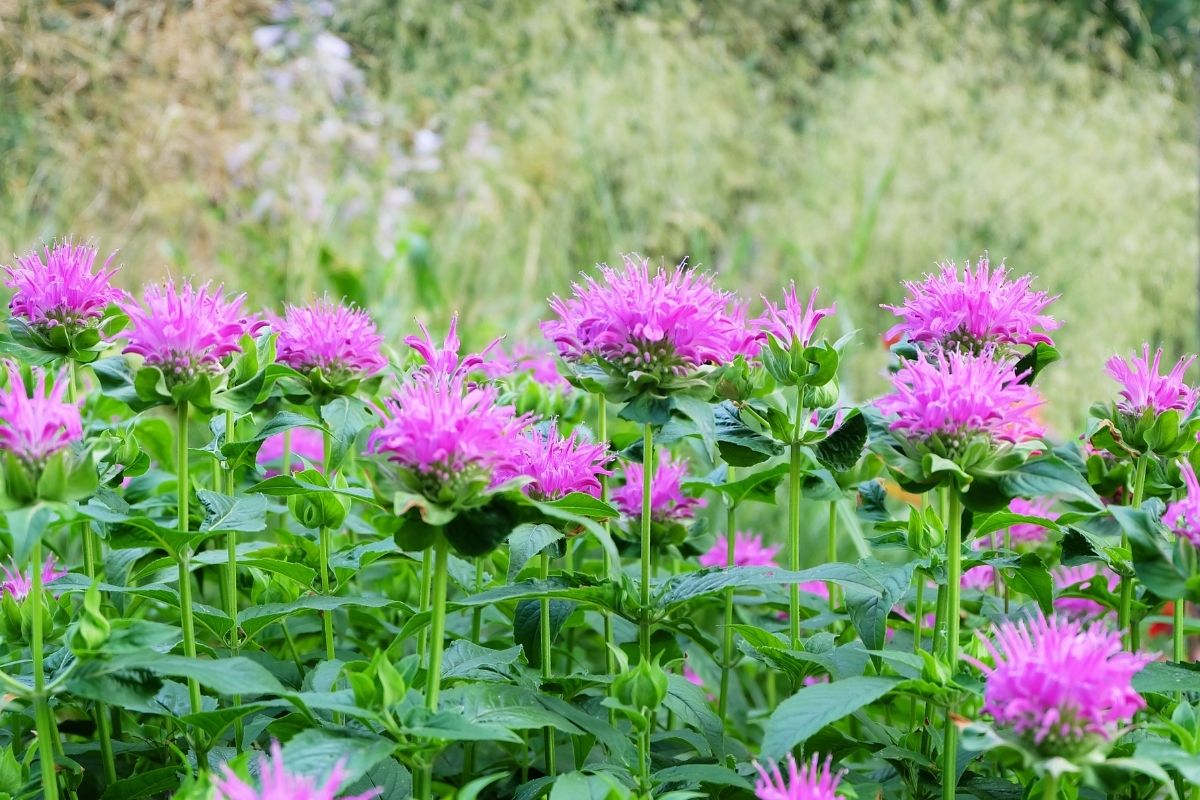
Bee Balm belongs to the mint family and is a common perennial plant. It requires full sun to part shade, just like Echinacea. All you have to do is spread the seeds, and this plant will grow just about anywhere. Bee Balm features tubular pink flowers on purple-green foliage.
Benefits as a companion plant for Echinacea include deer resistance, good pollinators, and mildew resistance.
See other flowers that are good companions for bee balm.
8. Blue Phlox (Phlox divaricata)
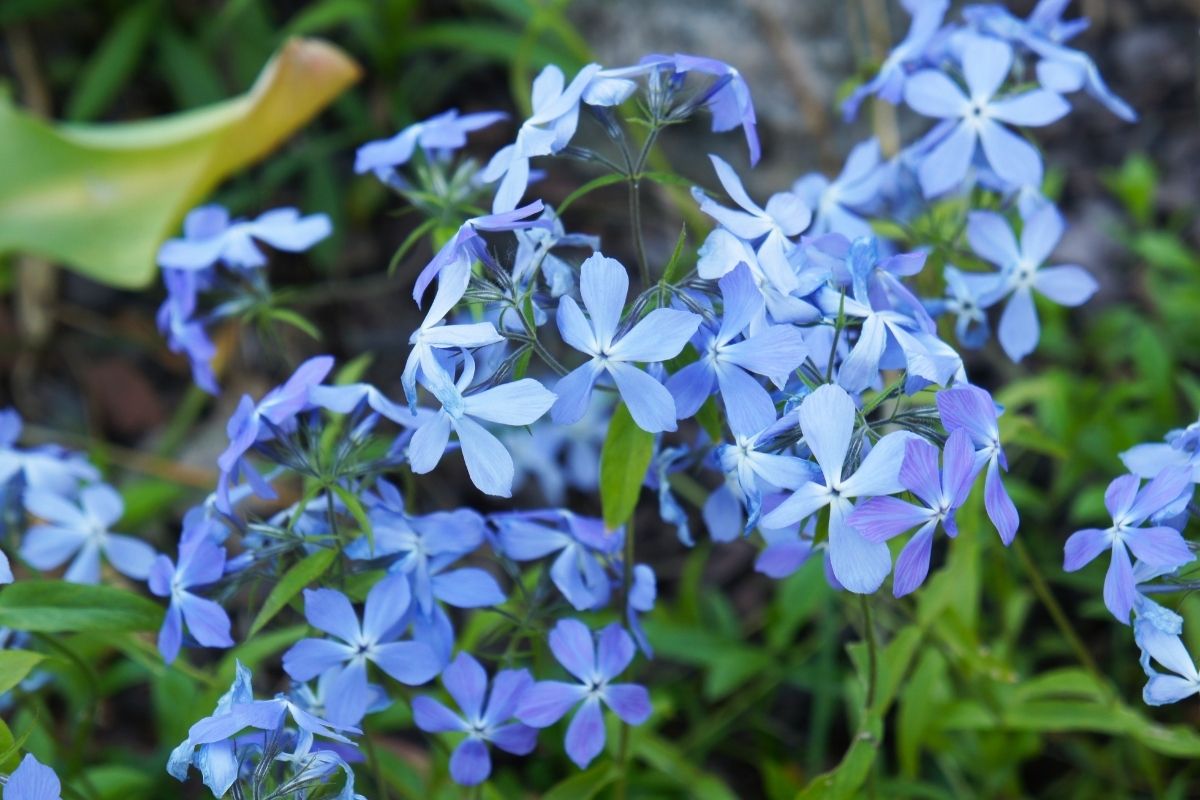
Blue Phlox are perennial wildflowers that grow up to 12 inches tall. Their natural habitat is forest floors. I like to plant them as a border in front of my wildflower garden. Blue Phox blossom with showy rose, violet, or lavender flowers, which match Echinacea flowers perfectly.
Phlox also attracts butterflies, hummingbirds, and other pollinators.
9. Butterfly Milkweed (Asclepia tuberosa)
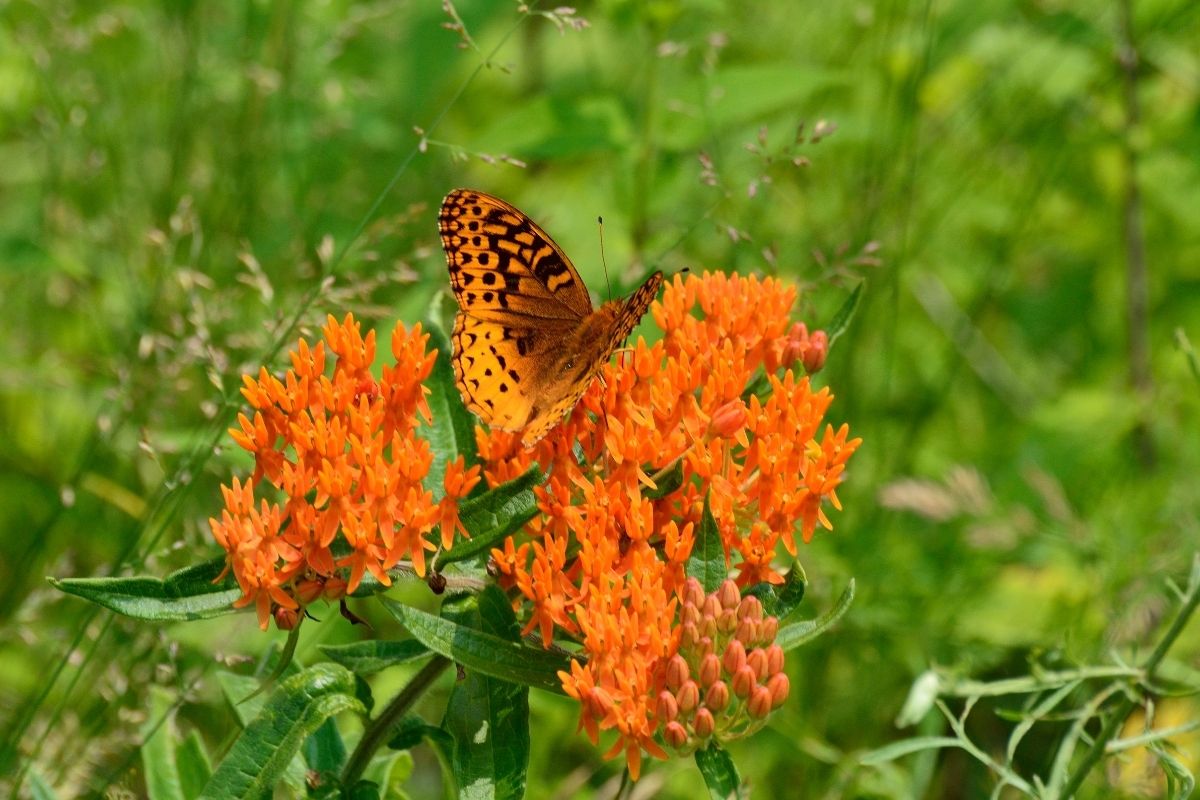
You can find Butterfly Milkweed in rocky woods, fields, and roadsides, as well as in botanical gardens. It’s a very hardy perennial that grows up to 3 feet tall and enjoys full sun. The taproot grows deep into the soil, so it’s very sturdy. This helps prevent Echinacea from drooping over.
Milkweed’s bright yellow-orange flowers compliment lavender and purple Echinacea. It also pairs well with ornamental grasses, other coneflowers, and wildflowers.
FAQ about Companion Plants for Echinacea
Here are a few of the most common questions asked about companion plants for Echinacea:
What vegetables grow well with Echinacea?
Vegetables make great companion plants for Echinacea. Since vegetable plants need pollination to produce vegetables, Echinacea and other companion plants attract bees, butterflies, and other pollinators.
The most common vegetables that grow well with Echinacea are:
- Broccoli
- Cauliflower
- Tomatoes
- Brussel Sprouts
- Cabbage
- Eggplant
Showcase your passion with wildflowers and vegetables that not only look gorgeous but feed your family, as well.
What shouldn’t you plant with Echinacea?
You shouldn’t plant any flower or vegetable that attracts aphids with Echinacea. Coneflowers are susceptible to aphids and can become infested quickly. Marigolds attract aphids and leafhoppers, so you should avoid these plants.
One way to prevent aphids from infesting Echinacea is to get companion plants that repel insects. Also, aphids are a grand feast for ladybugs and lacewings, so planting flowers that attract these beneficial insects can help keep infestations down.
Can you plant lavender with Echinacea?
Lavender is a versatile garden favorite in the United States Hardiness zones 5 to 9. Echinacea and lavender make a great pair. They require full sun but lavender doesn’t need as much water. As long as you have well-drained soil, and don’t water too much, both plants do well in the same garden.
Which companion plant for Echinacea keeps pests away?
One companion plant for Echinacea that keeps pests away is Catmint. Although Catmint smells refreshing to you and your cat, aphids, cucumber beetles, squash bugs, and Japanese beetles don’t care for the smell at all.
Can you plant herbs with Echinacea?
You can plant several aromatic herbs with Echinacea. The aromatic scent of Rosemary, Chives, Sage, Green Onions, and Oregano helps keep deer and rabbits away from your wildflower garden. Plus, you have to reach no further than your garden for a handful of culinary herbs.
About Growing Echinacea
Now that you know about companion plants for Echinacea, here are the answers to some frequent questions about growing them.
Where should you plant Echinacea?
Echinacea thrives in full sunlight in meadows, the edge of woody areas, and open fields.
What soil conditions for growing Coneflowers?
Coneflowers need dry to medium, well-drained soil. The soil should also have a pH of 6-7 and doesn’t require fertilizers.
Should you plant Coneflowers in groups?
You should plant Coneflower seeds about 18 inches apart. Each plant needs 1 to 4 feet of growing space. If the plants become overcrowded after a few years, you can divide them.
Do Echinacea flowers spread?
Echinacea flowers self-seed, so they’ll grow wherever the wind carries them.
Do Echinaceas grow under trees?
Echinaceas thrive in full sun or partial shade. They’ll grow under trees as long as the foliage allows the sun to pass through most of the day.
Conclusion
Natural areas are the ideal habitats for Echinacea. These Coneflowers are sturdy and drought resistant. Companion plants for Echinacea also thrive in natural habitats, such as wildflower gardens, rock gardens, and cottage gardens. They’re all beneficial to each other as pollinators, pest repellants, and deer or rabbit deterrents.
Try your hand at planting a sustainable perennial garden with companion plants for Echinacea. Whether you want to fill a natural setting with wildflowers or add color to an open field, Echinacea and companion plants are perfect choices to begin your gardening journey.
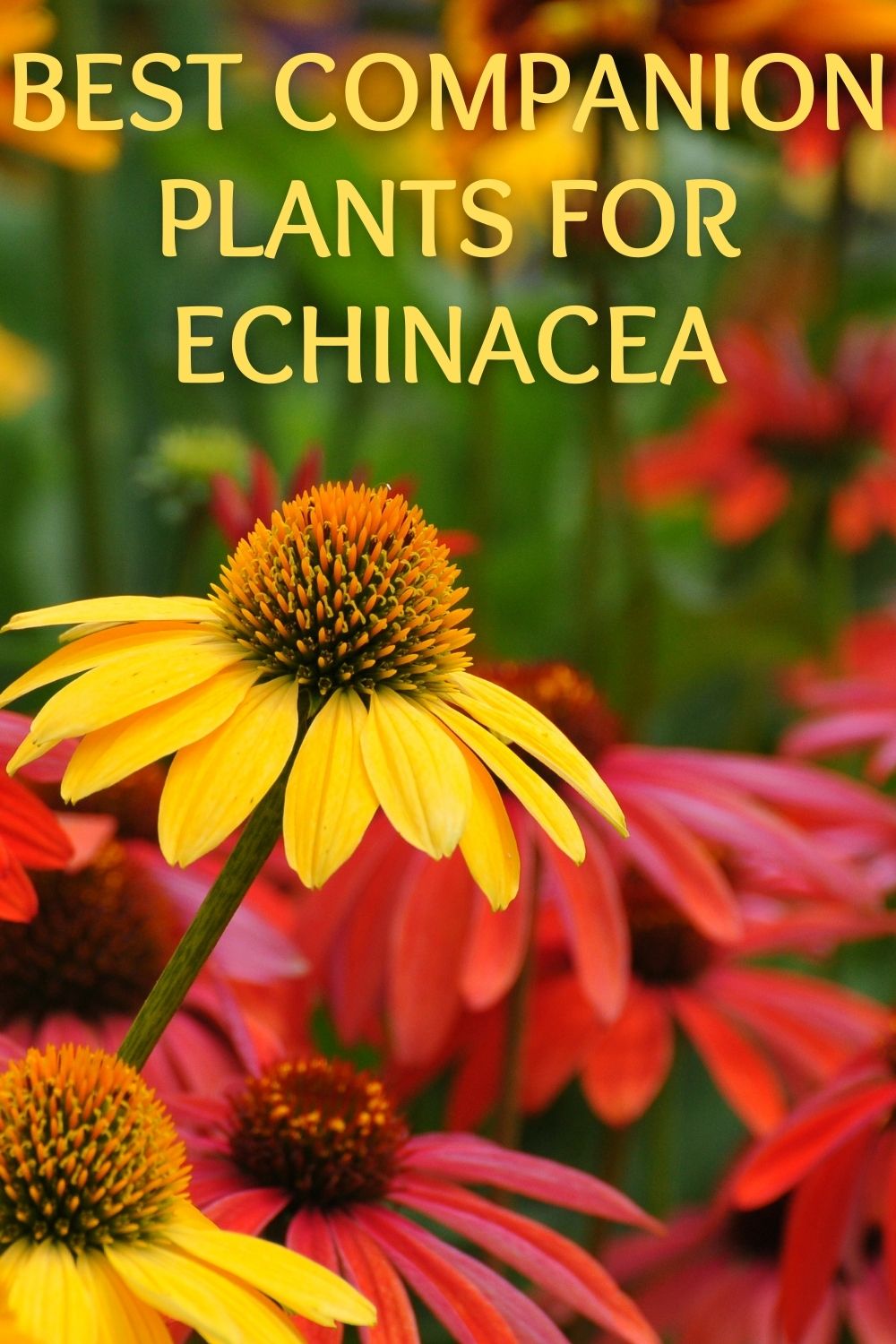

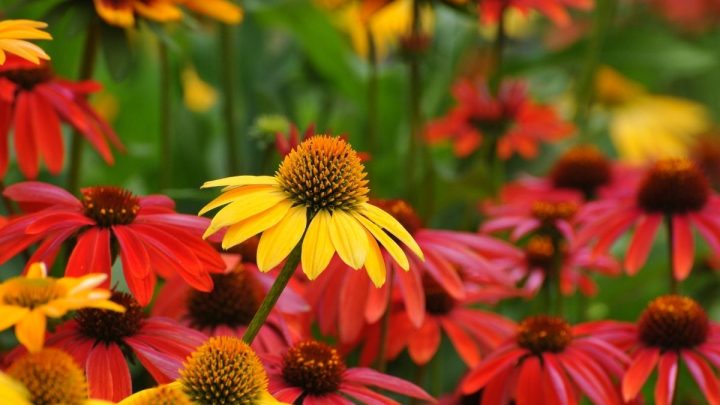

11 Perfect Companion Plants For Petunias (And 5 To Plant Apart)
Tuesday 1st of August 2023
[…] Echinacea flowers make great companion for many other plants. […]
Companion Planting Guide (Including 7 Benefits Of Polyculture)
Monday 4th of April 2022
[…] Companion plants for echinacea […]